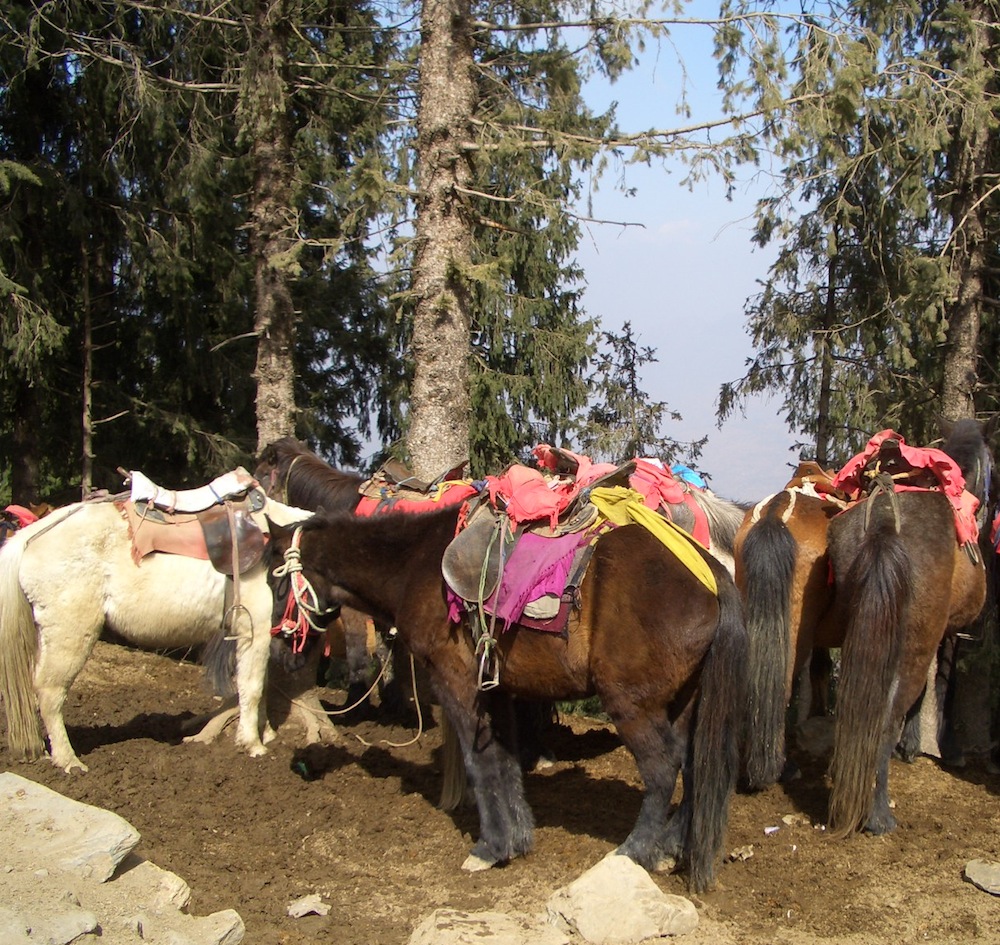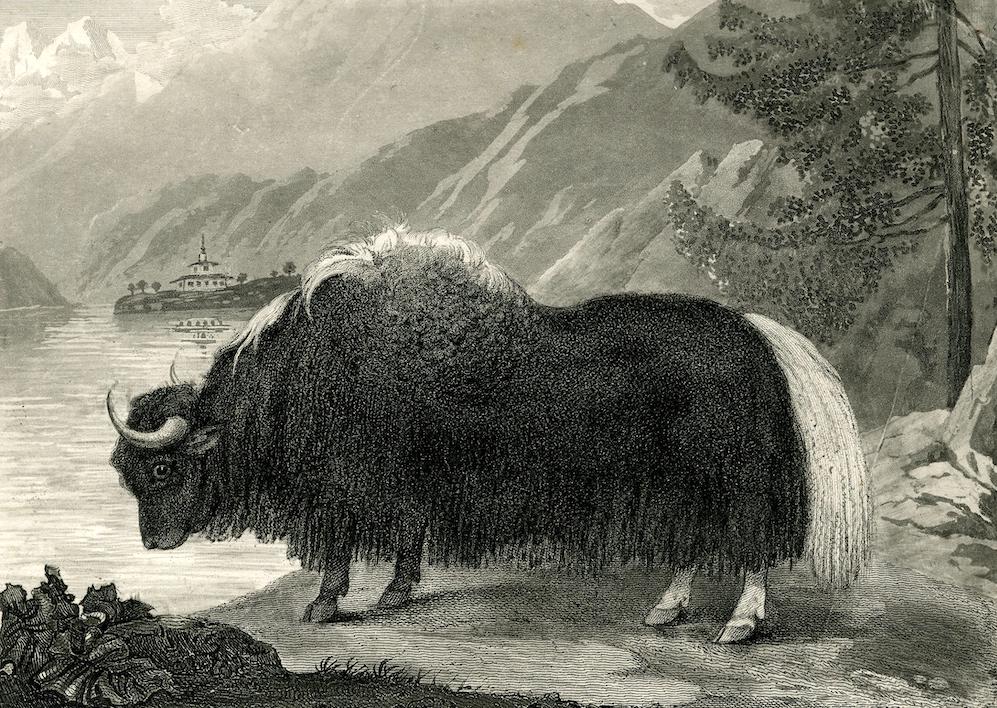This excerpt has been introduced, formatted, linked to other material, and illustrated with images from our own website, by Jacqueline Banerjee. Click on the images to enlarge them, and for more information when available.

As the following journal relates to my travels in countries little known to the majority of general readers, I think it necessary to enter into some explanatory detail by way of introduction. Even among those who have visited India, comparatively few have deviated from the beaten track. The greater number have passed their lives in the monotonous exchange if I may be permitted the expression, of one cantonment or station for another. Such have been content to vegetate in luxurious idleness, and have neither had nor sought opportunities of penetrating into the interior of the country. Even to these — then how much more to my English readers — some explanation is needful regarding the meaning of the terms which imavoidably occur in the journal, and of "ye manners and customs" of the East; also, of the peculiar modes of Eastern trayelling, so widely different firom anything known or practised in more civilised lands.
In India there are no railways; and, (with the single exception of the "Grand Trunk Road,") no turnpike roads, nor stage coaches; no posters; no conveniences for travelling. The "palanquin," or "palky," is the general conveyance for invalids, nervous ladies, and small children. The discomforts and annoyances attendant on this mode of transit, are incalculable, while the expenses are manifold. Moreover, even this conveyance is not available on the hills, where the roads are too narrow to admit of anything so bulky, except in the travelled districts immediately adjacent to our Hill Sanataria, such as Simla, Landūr, Almorah, Nynee Tâl, or Darjeeling. In many of the wilder districts of the Himalayan mountains, the Aborigines, being semi-savages, do not understand how to carry the smallest vehicle on their shoulders, which makes it imperative for one's own safety, to abandon all idea of such luxuries.


Left: A "palky," one of the modes of travel in India before the railways arrived.The "sturdy ponies" mentioned below. Right: The "sturdy ponies" mentioned below, ready to take tourist to a view point near Simla. Pack horses in Simla (now Shimla). Photograph by JB.
The only other alternative is riding, and this was my invaluable mode of travelling, though I always took witih me by way of precaution in case of sickness or accident, a small dhoolie, which is a more primitive kind of palanquin, very much smaller, lighter, and more portable. As hi as the roads permitted, I took with me my gallant Arab steeds, so long my faithful companions, and when obliged to send them back to the plains (owing to their being totally unfit for work in the rugged mountain paths of the Interior) I rode instead, the sturdy ponies which are the native of those hill regions. In the most snowy and precipitous mountains, where even these are considered unsafe, if mounted, I was obliged to ride the oxen of the country, (called "Yâks") while my ponies were formed into herds, and driven like sheep under the charge of one or two hill-mem. The "Yâks" are very unlike any oxen we see in any other part of the world. They are bred at an elevation varying from twelve thousand to eighteen thousand feet above the level of the sea, and they never thrive at less elevated spots, though they hare been known to exist as low down as ten thousand feet. These animals are shaggy, and their long hair, which reaches to the ground, covers them like a mantle from head to foot. They are wonderfully sure-footed and easy, but slow in their pace. They revel in snow, and delight in rolling in it, whether encumbered with riders or not!

The Yak of Tartary (A yak standing to left at the edge of a river in Tibetan landscape; plate X to Samuel Turner's "Account of an Embassy to the Court of Teshoo Lama in Tibet." 1800 Aquatint and etching). © Trustees of the British Museum. Reproduced on the Creative Commons Attribution-NonCommercial-ShareAlike 4.0 International (CC BY-NC-SA 4.0) license.
Where the word "march" occurs in my journal, I allude to the distance usually put down as a "march" for troops — varying from eight to sixteen miles, and regulated by the size of the available encamping-ground, the conveniences offered by the neighbouring villages, and the amount of shade afforded by the "topes" (or groves of trees).
After passing Hōshyârpore I have put the dis- tances in "cosses" as well as "miles," as Hōshyârpore is the last cantonment for our troops (with the exception of Eangra) in that direction. The "perambulator" not having been employed in these parts, and the natives being our only authority, the distances are more uncertain. The native term "coss" is the only one approximating to our "mile." It is, however, an indefinite and mioertain distance, varying from one mile to four, according to the phraseology of the districts traversed. The hill-coss is, however, usually from a mile to a mile and a half. A person accustomed to ride or walk, is soon able to decide the length of the "coss," but of course, absolute accuracy cannot be vouched for. I mention this, as my distances may hereafter be called in question.

Mount Kanchenjunga from Darjeeling by Edward Lear, in 1877.
In the lofty regions of eternal snow, few travellers find themselves able to walk any distance, owing to the rarity of the atmosphere. The action of the heart becomes accelerated in the most painful manner, and in the Passes a fearful and peculiar sickness often attacks the traveller, prostrating every energy. This will be more fully described in the journal itself, so I need not enlarge upon it here.
As the words "plains" and "hills" will frequently occur in the course of this journal, I may as well e±plain here that these are terms in common use amongst Anglo-Indians; the former signifying the entire country, with the exception of the lofty ranges of the Himalaya and the Western and Eastern Ghâts, familiarly called "the hills," in contra-distinction to the low country.
With respect to many familiar Indian words which I have found it convenient to employ, I have thought it best to explain their meaning in the notes at the foot of the pages where they occur that is as fear as they are translatable. Before concluding these introductory remarks, I must not omit to mention that the "Travels" described in the following pages were not undertaken with the view of future publication. I feel aware how many errors and imperfections may have been originated by this simple fact.
Under the pressure of severe domestic affliction, which was paralysing every energy of mind and body, I formed the project of visiting these almost unknown countries. I found no means so efficacious in enabling me to escape from "the demon thought," as the constant change of scene in travelling, and the fascinating excitement inseparable from wanderings in wild and unexplored regions — lands where
— things that own not man's dominion dwell,
And mortal foot hath ne'er or rarely been
I had solitude without its weariness, andin the wilds of the snowy Himalayas I almost forgot the world I had left, and the memory of many bitter sorrows and trials was softened if not banished. To me then, this journal, while it is the record of many pleasant hours passed, and many glorious scenes visited, farther proved a solace and a source of amusement on my "solitary way," beguiling many a weary hour. Nor can I even at this distance of time, glance over its pages without a grateful recollection of the relief experienced by a harassed mind in the occupation it afforded, and in the exploration of the interesting countries it describes.
Links to related material
- Juliana Hervey, née Morton (1825-1905): A Brief Biography
- Modes of travelling in India
- Preface to The Adventures of a Lady in Tartary, Thibet, China, & Kashmir, Vol. I
- Short extracts from The Adventures of a Lady in Tartary, Thibet, China, & Kashmir
Created 7 August 2022